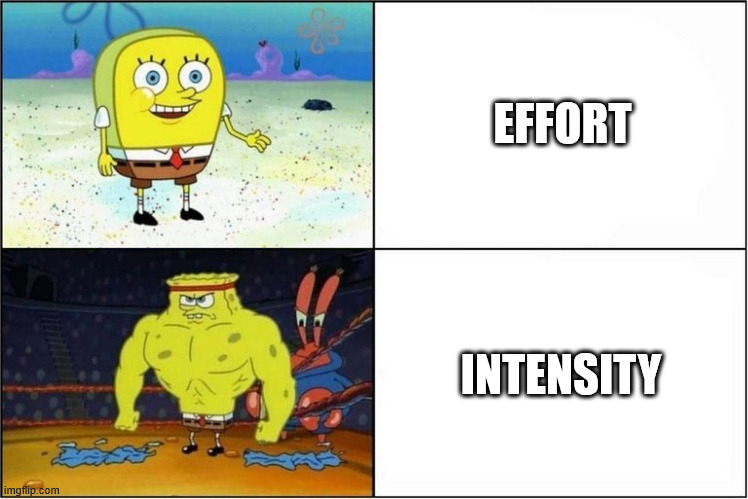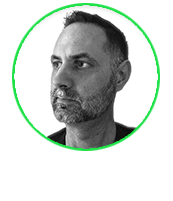
Intensity Over Effort: How Muscles (and People) Actually Grow
We’ve Been Lied to About “More Is Better”
Look around at the fitness world today and you’ll see a chaos of effort.
People grinding away for hours at the gym.
Crushing split routines. Seven-day programs. Super sets. Drop sets. Volume training. “Bro splits.”
But for all that volume, how many actually get stronger? Leaner? More muscular?
Not many.
The same pattern plays out in other areas of life: social burnout, overworked entrepreneurs, and people who confuse motion for progress.
We’ve been sold a lie: that success is linear, and more effort equals more results.
But if you zoom out and apply just a little physics, a little economics, you’ll see why that doesn’t work.
Enter High Intensity Training (HIT). A radically minimal, brutally efficient system that throws “more is better” in the trash and replaces it with something far more powerful: intelligent intensity.
And here’s what’s wild:
Once you understand why HIT works, from first principles, you’ll start seeing the same success pattern in business, relationships, creativity, and life itself.
Because success isn’t about doing more. It’s about pressure, timing, and recovery…and getting out of your own way.
The Real Cost of Wasted Energy
Let’s get uncomfortable for a second.
If you’re like most people, you’ve spent years doing too much.
- Too many reps in the gym that barely stimulate growth.
- Too many meetings that don’t move business forward.
- Too many shallow conversations that never build connection.
- Too many side projects and not enough strategic leverage.
What does all of this have in common?
Wasted energy.
And physics hates waste.
Your body, your brain, your social network, and your business are all complex systems governed by the same universal laws. One of those laws is that energy, when applied without direction or purpose, gets dissipated into noise.
In the gym, that means spinning your wheels for years with no meaningful growth.
In life, it means exhaustion with nothing to show for it.
This is the moment I started to wake up. I had been hitting the gym consistently, following traditional routines, but my progress had plateaued. I didn’t look bad…but I didn’t look great either.
Then I discovered Mike Mentzer and later Jay Vincent, who not only looked incredible but did less training than anyone I had ever seen.
I thought: What if less actually is more…but only when it’s done right?

The Physics and Economics of High Intensity
High Intensity Training isn’t just a workout. It’s a framework for how the world works.
Mike Mentzer (bodybuilder, philosopher, and perhaps the original contrarian) was obsessed with rationality. His workouts weren’t random. They were rooted in the laws of stress, recovery, and adaptation.
Jay Vincent continues that legacy today, showing that just one or two full-body workouts per week, each lasting about 30 minutes, can lead to elite-level physique and strength.
Here’s how it works, at the level of physics and economics:
1. Stimulus Must Be Intense Enough to Trigger Adaptation
In physics, to move an object from rest requires force. Not just any force – a threshold must be crossed.
In economics, to move a market, you need price pressure. A sale that no one notices doesn’t change behavior.
HIT leverages this by applying maximum intensity for a very short duration, crossing the biological threshold needed to initiate growth.
And the key to crossing that threshold? Going to failure.
Not stopping when it gets hard. Not stopping when it burns. But continuing until you can’t complete another rep with good form, until your muscle literally fails.
That’s the only way the body knows it must adapt. Anything less is just stimulation, not transformation.
This is not about doing more. It’s about doing enough…and no more.
The law of diminishing returns says that after a certain point, each additional rep, set, or hour delivers less value. At worst, it causes damage or regression.
The body is a system built for survival. It won’t adapt unless it has to. High Intensity Training forces that adaptation with a focused, brief, high-pressure load.
Same with business. A business attempts to improve a product when encountering enough resistance in the market.
Same with social life. One deep, vulnerable conversation can build more trust than months of surface-level chit-chat.
“What we’re looking for is not volume of effort, but depth of effort.” – Mike Mentzer
2. Recovery Is Not Optional, It’s Strategic
After that intense effort, the system needs to recover.
Recovery isn’t passive. It’s where the real gains happen.
Most people train again before recovery is complete, destroying the chance for growth. They confuse fatigue with productivity.
But biology doesn’t work that way.
Your nervous system, muscles, brain, and relationships work the same way.
Jay Vincent often says: “Muscle is built during recovery, not during training.”
In the same way, insight is built in reflection, not constant stimulation.
Progress is nonlinear. It needs space.
High performers in every domain understand this.
They go all in – then let go.
That’s how stress converts to growth.
That’s how ideas become breakthroughs.
That’s how tension becomes transformation.
My Experience: Getting Results by Doing Less
When I switched to High Intensity Training, it made sense. But was it too good to be true?.
Two workouts per week? One set to failure per muscle group? That’s it?
But I committed to it. I followed the protocol.
I kept strict form. I didn’t chase the pump. I focused on maximum muscle fiber recruitment in a single, slow, brutally hard set.
And something amazing happened.
After just a few weeks, I started to notice real changes. Strength went up. My physique tightened. I looked and felt better…on less total work.
Even better? I had more time and energy to pursue other goals.
It felt like I had found a cheat code. But it wasn’t a trick, it was just science.
Then I hit a wall again, specifically with my legs.
No matter how intense I trained them, they didn’t respond like my upper body did.
That’s when I came across a talk by Arthur Jones, the original inventor of Nautilus machines and one of the earliest pioneers of HIT. He explained that the legs are built differently. Because they’re used to carrying the body all day long, they’re more resistant to fatigue, and they often require more reps to reach failure.
Not 6–8 reps like the upper body, but 15–20. Sometimes more.
So I tried it. I upped my leg reps to 20 per set—still going to failure, still just one set.
That’s when the magic happened. My legs finally started growing.
It reinforced everything I had been learning: that intelligent intensity, tailored to the muscle’s characteristics, is everything.
Efficiency > effort.
The principle that made my workouts better started making the rest of my life better too.
The Hidden Transferability of HIT Principles
What if this wasn’t just about fitness?
What if the deeper reason High Intensity Training works is because it follows universal laws that apply everywhere?
Here’s how the same principles show up in other domains:
Business
- Minimum Viable Product = Minimum Viable Muscle.
Just like the human body adapts to only the minimum necessary stimulus (enough to signal a need for more strength), a business grows only in response to market feedback. You don’t build a full product with every feature. You launch something barely functional, then adapt based on what the environment demands. Your body is the same—it doesn’t grow until the environment (your training intensity) gives it a reason to. - Recovery = strategy.
Stepping back from constant output allows new insights to emerge. Rest is leverage. - Minimum effective dose.
You only need to do the smallest amount that triggers change. Extra effort = extra waste.
Social & Relationships
- One intense, vulnerable conversation is worth 100 shallow ones.
- Real Presence, not frequency, creates connection.
- Just like muscles, relationships grow through tension and repair – not constant stress.
Creativity
- Deep focus, not multitasking, generates breakthroughs.
- The creative flash often comes after a period of rest – not grinding.
The core insight?
Systems grow through intensity, not volume.
Just like muscle.
Just like business.
Just like life.
Key Takeaways
- High Intensity Training (HIT) is effective not because it’s trendy, but because it aligns with the laws of physics and economics.
- Success, whether physical, social, or professional, is a game of leverage, not labor.
- Mike Mentzer, Jay Vincent, and Arthur Jones are living proof that you can do less and gain more if your intensity and precision are dialed in.
- I’ve personally experienced better gains with HIT than with years of traditional training. It’s not just about fitness – it’s a mental model for life.
- In any system, the cost of wasted effort is high. Focus your energy. Apply pressure. Then step back and let growth happen.
Final Thoughts
HIT works because it respects nature.
It respects the way systems evolve under pressure. It doesn’t fight entropy with volume, it counters it with leverage.
That’s the same pattern that wins in business, art, relationships, and self-mastery.
So if you’ve been stuck doing more, pushing harder, spinning your wheels…
Maybe it’s time to do less.
But do it with more intention.
More intensity.
More patience.
And watch what happens when the system finally responds.
Just like muscle, life grows under pressure…but only when you give it space to grow.
If this resonated with you, I challenge you to try it: one high-intensity workout this week. One deep conversation. One focused work session. Then rest.
Watch what grows.
Thanks for reading my stuff,
MJ




